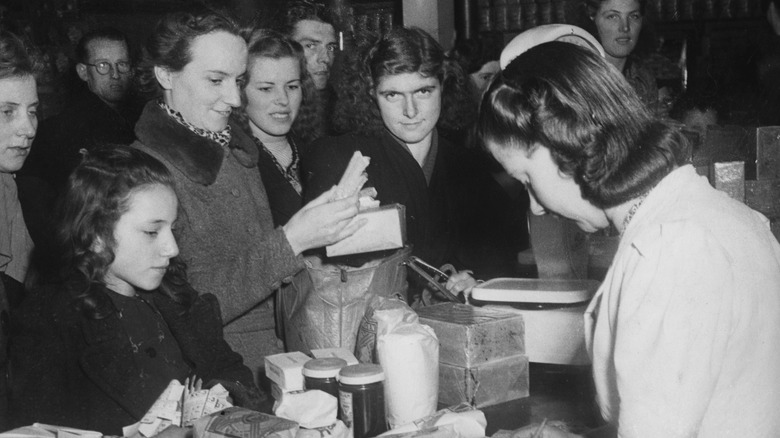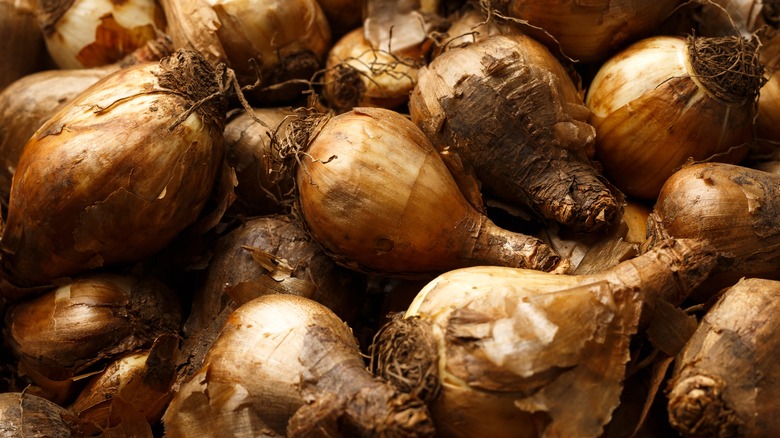The Humble Dutch Soup That Saved Lives During WWII
The years of World War II were lean for people of many countries as they struggled to find enough food to survive. Such was the case in the Netherlands which saw about 18,000 to 20,000 Dutch men, women, and children die from malnutrition during what is called the Hunger Winter (winter of 1944 to 1945), many of them older men, according to Dutch Review.
The country suffered through a very cold winter as their food and coal were blocked by the Nazis. Therefore, the Dutch began to do whatever they could to survive, such as burning furniture and pieces of houses to stay warm.
Dutch cities were hit exceptionally hard by the lack of food until the Allies liberated the Netherlands in May 1945, per Dutch Review. In November 1944, adults living in cities such as Amsterdam had food rations that amounted to about 1,000 calories per day, but that number decreased significantly as the winter wore on to about 580 calories in February 1945.
The Dutch had a history of using tulips as a "surrogate" in recipes. Dating back to a coffee bean shortage in 1941, the Dutch had made "coffee" from 12% coffee beans, 52% barley or rye, 20% chicory, 8% green peas, and 8% tulip bulbs, according to Atlas Obscura. During the times of basic survival in the Hunger Winter, tulips became even more important to the Netherlands.
A soup of necessity
Tulips for centuries have been a symbol of the Netherlands and were sold as a cash crop, reports Atlas Obscura. But, during the Hunger Winter, tulips were used to keep people alive. They were turned into soup.
With it being impossible to export their tulip bulbs, growers in the Netherlands sold the bulbs domestically as a food alternative because of their high starch content, per Amsterdam Tulip Museum. Newspapers at the time began to provide tulip bulb recipes (via Fluwel) and one recipe that caught on was tulip bulb soup.
In addition to being grated into soup, Atlas Obscura chronicles how tulip bulbs were used as a replacement for potatoes in fritters and cabbage in sauerkraut or were ground up and used for bread and cookies. Although tulips are mildly toxic, and should generally not be considered food (per National Capital Poison Center), Atlas Obscura notes that parts of the tulip are edible, with the germ removed, after being properly prepared.
The tulip bulbs consumed during the years of the war would not have tasted good, notes Fluwel, which says that fresh tulip bulbs have a milky flavor. However, the dry bulbs brought out of storage during the war would have had a dry and bitter taste.
Some restaurants in the Netherlands have put tulip bulbs on the menu as a symbol of the country's resilience, according to Atlas Obscura. Knowing how tulip bulbs helped to keep a nation alive, you may never look the same way at the flower.

